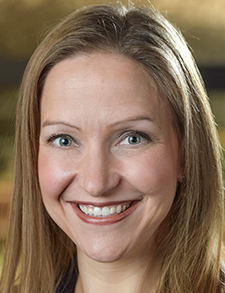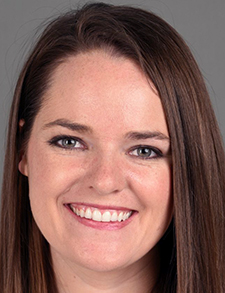
Shutterstock.com
Shared learning. Bidirectional mentorship. Professional leverage.
Buzzwords to some, but to the leadership of SHM’s Special Interest Group (SIG) for nurse practitioners (NPs) and physician assistants (PAs), the lofty ideals are goalposts and a raison d’être.

Ms. Cecil
“It provides a fantastic opportunity for NPs and PAs and those in hospital medicine who work with them to come together in a creative space to think about how we might be able to first listen and understand all the different amazing, programs across our country,” said Margaret Cecil, APRN, MSN, ANP-C, system director of Advanced Practice Acute Care Operations at CommonSpirit Health’s national health system and immediate past chair of the SIG. “And then take that shared learning and translate it, when appropriate, into our own individual organizations.”
SHM has more than 25 SIGs whose aim is to “create communities of hospitalists around topics of interest, practice areas and/or care models.” The NPs and PAs SIG by nature may be among the most collaborative of the special interest groups, as it’s a home for both those practitioners and anyone else in the HM universe who works with them. That might help explain its membership, which numbered 4,374 as of June 20.
In fact, current SIG chair Kristin Lindaman, PA-C, said the group can achieve a broader impact with buy-in from those who aren’t NPs and PAs.
“Collaboration is necessary to be successful,” said Ms. Lindaman, associate program director for the Wake Forest School of Medicine PA program in Winston-Salem, N.C.
Ms. Lindaman said she sees informal connections all the time.
“There are times when somebody brings up a specific challenge or a project they’re interested in, and having those informal connections allows us to help connect that person with others having similar challenges or with similar interests,” she said. “This helps other people make those informal connections and build their network.”

Ms. McGrath
Bridget McGrath, PA-C, FHM, director of NP/PA hospitalist services and interprofessional education co-lead for the section of hospital medicine at the University of Chicago Medicine and a former SIG chair, said that today’s health care world is seeing increasing NP and PA utilization, making it incumbent for “optimal inter-professional communication.”
“We have to understand the NP/PA professions have had exponential growth over this past decade, with an increase in new clinicians entering the field,” she said. “Developing bi-directional mentorship, among APNs [advanced practice nurses], PAs, and our physician colleagues creates optimal team care, which allows us to tackle some of health care’s evolving issues.”
Ms. Cecil couldn’t agree more.
“One of the things we talk about on a regular basis is that hospital medicine is a team sport,” Ms. Cecil said. “Whether we’re talking about physicians and NPs/PAs, or nursing colleagues, or respiratory therapists, or physical therapists, or everybody in between who takes care of patients in the hospital setting, there is a connection because we all have to work together to achieve the best outcomes for our patients. In alignment with SHMs Big Tent thought processes, it’s really important for us as an NP/PA SIG to certainly focus on things that are associated with NPs and PAs, but not to do so in a silo.”
The value of connection—during the COVID-19 pandemic particularly—was not always the formal networking that occurred at in-person or remote events.
“I would share that we have seen informal relationships in action in supporting individuals,” Ms. Cecil said. “Being able to have those informal connections where you have their email address and you have their cell phone number, and you can reach out on numerous topics that might be able to help create a solution that you might not have thought of before has been very beneficial for many members of the NP/PA SIG.”
Ms. Lindaman said she sees that all the time.
“Somebody might say ‘This is a challenge,’ or ‘This is something I’m working through right now,’ or there’s a project they’re interested in…and by having those informal connections there are a lot of times I’m able to tell them, ‘I know somebody who is working on something similar, let me put you in touch with them,’” she said. “This is how you help other people make those informal connections and build their network.”
Ms. McGrath believes the pandemic has made this SIG—and others like it—even more invaluable as those in the health care industry are looking for varied viewpoints during the past few years of upheaval.
For example, she said there were many conversations at this year’s SHM Converge about the future of hospital medicine and it’s important that NPs and PAs are at the forefront of that conversation.
“At SHM Converge, we heard many discussions on where we as a health care community go from here, as the pandemic continues to linger,” she said. “We have an opportunity to reflect on what we have learned over the past couple of years. I think one lesson is that collaboration and innovation is a strong suit for hospitalists, and NPs and PAs can be a part of that. We have the opportunity to be part of the discussion for how health care develops in the next phase.”
Richard Quinn is a freelance writer in New Jersey.